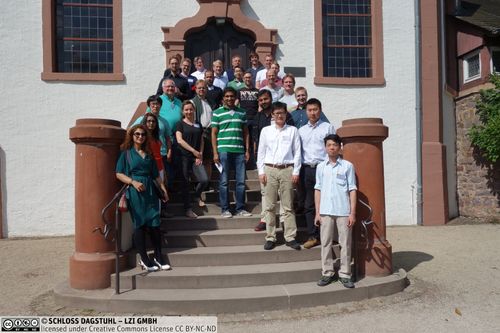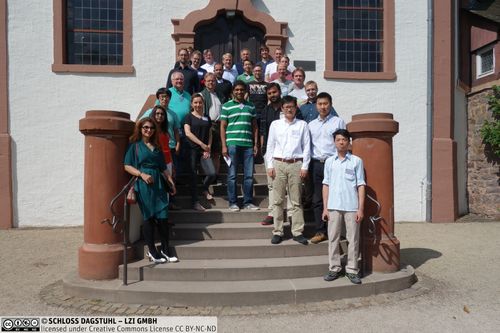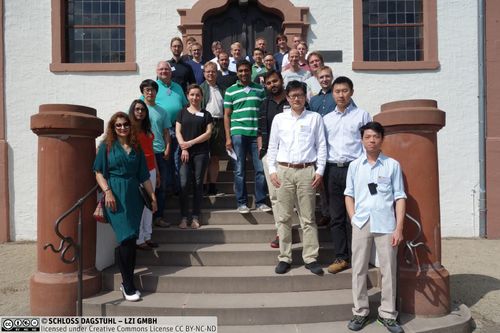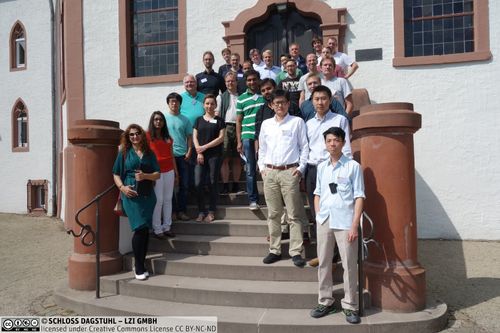GI-Dagstuhl Seminar 16353
Aware Machine-to-Machine Communication
( Aug 28 – Sep 02, 2016 )
Permalink
Organizers
- Mayutan Arumaithurai (Universität Göttingen, DE)
- Stephan Sigg (Aalto University, FI)
- Xiaoyan Wang (Ibaraki University, JP)
Contact
- Heike Clemens (for administrative matters)
Dagstuhl Seminar Wiki
- Dagstuhl Seminar Wiki (Use personal credentials as created in DOOR to log in)
Shared Documents
- Dagstuhl Materials Page (Use personal credentials as created in DOOR to log in)
Documents
Current trends show that machine-to-machine (M2M) interactions such as Internet of Things (IoT), wearables, vehicular networks and smart homes will play a major role in the Internet. In fact, it is expected that M2M interactions will constitute more than a third of the total connections[1]. These networks are rapidly growing in complexity and continuing to extend into the personal and private domain. Fuelled by the numerous sensors interconnected, massive amounts of data need to be managed and routed efficiently.
At the same time, networking technology is shifting towards virtualization, with Software Defined Networking (SDN) and Network Function Virtualization (NFV) likely to change the infrastructure landscape. The cloud concept is transforming the Internet to a network of data centers, with a com- munication model consisting of computer-to-cloud-to-computer interactions. Big-Data/Analytics based decision making is also expected to play a major role. Networking paradigms are witness- ing a shift from the traditional end-to-end connections and location oriented networking to con- tent/information oriented architectures. Information Centric Networking (ICN), a popular future internet architecture that provides features such as the ability to handle content by its name, to secure individual pieces of data and support ubiquitous caching that allows data to be obtained from the closest source.
The potential benefits of combining this massive environmental perception based on M2M with the control power available in upcoming network paradigms is huge, as is the number of research issues opened. ICN and SDN have been primarily designed for fixed networks. While these tech- nologies have the potential to cater to the needs to M2M based applications, there remains a lot of unresolved issues. This concerns, for instance, the largely unsolved question of scalability of ICN routing schemes, orchestration of NFV based services, as well as the location and actual implemen- tation of SDN controllers. Some of the interesting research issues are listed below.
Context-based support for M2M The consideration of environmental stimuli for a flexible adaptation of networking and routing strategy can further advance current protocols. For instance, (1) Emergency situations might demand other routing schemes and priorities than normal operation; (2) DTN obtains a new dimension when the dissemination strategy can be changed according to, for instance, flow behaviours, movement speed or transportation mode; (3) Local networks could automatically be formed and secured against intruders in meeting situations or conditioned on social relation or friendship.
In M2M, where content covers also environmental situation and personal behaviour patterns, context-based services are capable of guiding towards not only content, but situation or groups of people with equal mindset, behaviour patterns or sentiment. Likewise, the location-independency of CCN-based routing holds significant potential of simplification for situation-dependent services: Instead of hard-coding individual sensor sources for input, always the nearest sensor reading of one particular type of source could be adaptively chosen.
Security for M2M Security and access control are key concerns for M2M and traditional end- to-end security approaches might not be sufficient to handle the plethora of use-cases envisioned for M2M. ICN, with its focus on securing individual pieces of content complimented with group encryption approaches such as ABE could be a potential solution for M2M security. SDN holds the promise of increased security when, for instance, security presets are conditioned on shared situation or also on friendship relationships. Friendship and social contact can then control security settings of each individual connection when all communication partners and their situation/context can be clearly identified or could associate themselves to ABE and use it for group encryption.
Services for M2M The massive amount of data available in such networks also demands for novel, efficient routing, storage and data reduction schemes. Moreover, Big-Data/Analysis based mapping and other decision making services might facilitate efficient M2M interactions. Publish/Subscribe services might also be required to ensure that the M2M devices need not keep track of all the interested subscribers or those might publish data that is of interest to them. Also, introducing cloud-based solutions promises high potential but also challenges regarding reliability, cost and security issues. Use of ICN, SDN and NFV to facilitate these services needs further research and joint activities. Within the GI-Dagstuhl seminar, we intend to identify such and other timely research issues and discuss them and potential solution or collaboration together with the participants.
Dr. Mayutan Arumaithurai is a Junior Research Group Leader in the Computer Networks Group at Institute of Computer Science, University of Goettingen and is the scientific co- ordinator of the EU-Japan project titled GreenICN: Architecture and Applications of Green Information Centric Networking that focuses on Information Centric Networking. Prior to that, he worked as a research scientist at Network Laboratories of NEC Europe Ltd. in Hei- delberg, Germany. He received his doctoral degree from the University of Goettingen in 2010 while working for Nokia Siemens Networks and University of Goettingen. His research interests include Software Defined Networking and future Internet architecture such as ICN.
Prof. Xiaoyan Wang received the BE degree from Beihang University, China, and the ME and Ph. D. from the University of Tsukuba, Japan. He is currently working as the assistant professor with the college of engineering at Ibaraki University, Japan. Before that, he worked as an assistant professor (by special appointment) at National Institute of Informatics (NII), Japan, from 2013 to 2016. His research interests include wireless communications and networks, with emphasis on cognitive radio networks, vehicular networks, network security and privacy, and cooperative communications.
Stephan Sigg (stephan.sigg@aalto.fi) is an Assistant Professor in the Department of Communica- tions and Networking at Aalto University, Finland. He was previously with the Computer Net- works group of Georg-August-University of Goettingen and a researcher at TU-Braunschweig. As an academic guest, he has cooperated with the Wearable Computer Lab at ETH-Zurich, the Nodes Laboratory at the University of Helsinki, and the Information systems architecture research devision at the National Institute of Informatics. He obtained his Ph.D. (with hon- ors) from University of Kassel, Germany in 2008. His research interests include the design, analysis, and optimization of algorithms for Pervasive systems, in particular for device-free passive activity recognition.
[1] 1http://www.cisco.com/c/en/us/solutions/collateral/service-provider/ip-ngn-ip-next-generation-network/ white_paper_c11-481360.html





